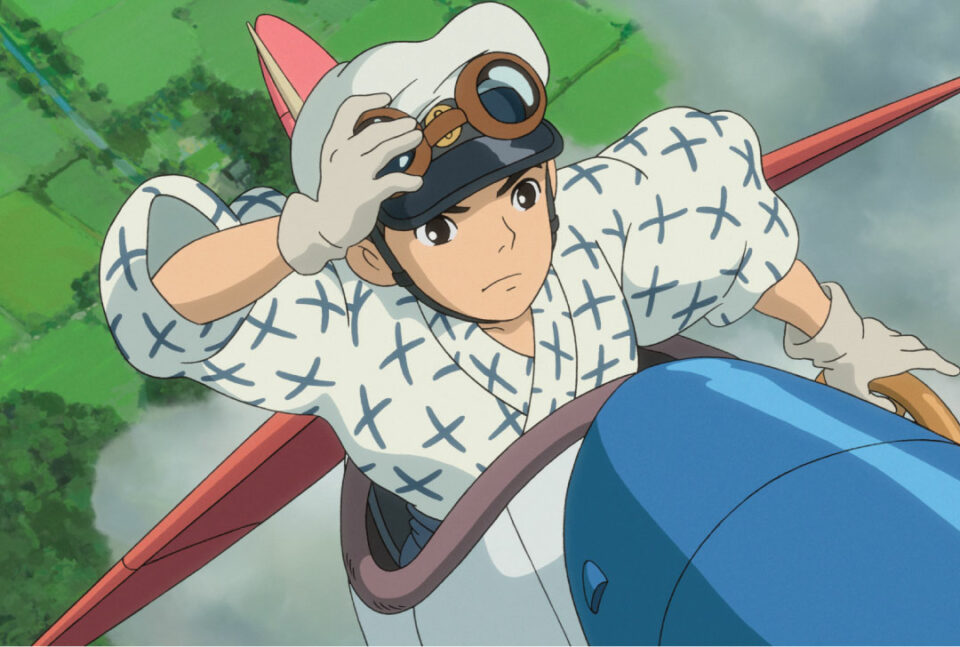Welcome back to a Journey through Miyazaki’s Ghibli. If you didn’t catch the article last week, HBO has all of Hayao Miyazaki’s written and directed Studio Ghibli films available for viewing. I’ll be going through all of them to talk about my thoughts on each film and the experience of viewing them all.
It’s interesting to see the themes and plots that Miyazaki was drawn to even early on in his career. With Nausicaä, we saw an early interest in a large-scale, apocalyptic conflict between man and nature. Kiki’s expressed the struggles of growing up and going out into the world. Porco Rosso explored themes of nihilism and finding a place and purpose in the world, despite one’s difficult circumstance. Many of these themes would be later revisited in the latter half of Miyazaki’s career, with an older, more experienced touch.
Which takes us to the second half of our journey …
Princess Mononoke (1997)
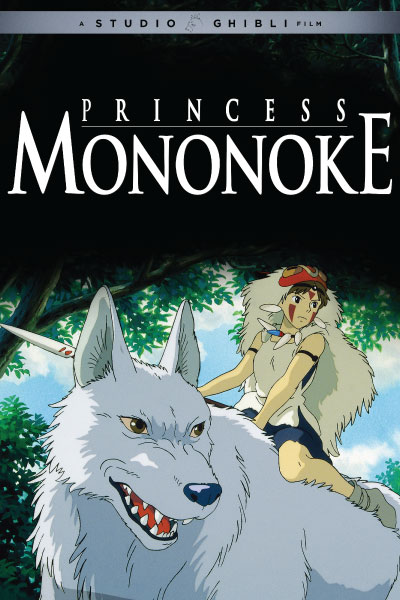
We pick up with what I can confidently say is my favorite Ghibli film: Princess Mononoke. Many of the elements that I find so strong in Miyazaki’s films are at full force in this film: the beautiful art style, the powerful nature vs. man themes, and an ambitious, fantastical world.
Princess Mononoke begins with a young man named Ashitaka stopping a demon from attacking his hidden village. It’s important to note that demons in Mononoke are animal gods driven to madness by their own grief. Ashitaka manages to stop the creature, but in the process gets his arm infected with a demonic parasite. Forced to leave the village, lest the disease spreads, Ashitaka ventures out into the world to find what caused a demon to be created and cure his illness. While out in the war-torn world, he discovers a thriving settlement led by the charismatic and pragmatic Lady Eboshi. Although they are making a better, healthier society, they are in direct conflict with the forces of nature around them. In particular, the wolf god Moro and her adopted human daughter San wage a guerilla war against the village. It’s up to Ashitaka to discover a way to find balance between all of the conflicting forces.
This film is a revisitation of many of the themes and conflicts explored in Nausicaä of the Valley of the Wind. However, the brilliance of Mononoke lies mainly in its much more successful worldbuilding. The story is set in a fantastical version of the Muromachi Period of Japan which emphasizes the effects that human conflicts have on nature. However, the complexity of this theme is that neither side is entirely good or evil. The animal gods believe they must either kill or be killed: attacking humans uncompromisingly and viciously. Ashitaka finds them to be almost beyond any reasoning, on a path to becoming demons like the one that attacked his village. Lady Eboshi, the leader of the industrialized Iron Town, is a force of progress and modernization. She sees the power in giving a greater purpose to marginalized groups such as sex workers and lepers. And yet, rather than being driven to exploit them, she is characterized by her compassion as she actively fights on the front lines to protect her people against warlords and nature alike.
The beauty of this conflict is showing how out of balance the world is. The warlords represent the rigid outside society, with its disproportionate allocations of power and marginalization of certain groups of people. This leads to a leader like Lady Eboshi, who is willing to make any sacrifice to ensure that her people don’t have to return to the old society. But, while these two groups clash, the land around them is destroyed and nature is enraged. Ashitaka, the youngest member of a dying community, is directly harmed by the external conflict. It’s left to him to take an active role in the world, sacrificing much of himself in the process, and find a solution.
Mononoke’s world is rich and imaginative and its commentary on industrial progress remains relevant to this day. This is a fantastic film that shows everything that makes Miyazaki’s works instant classics.
Spirited Away (2001)
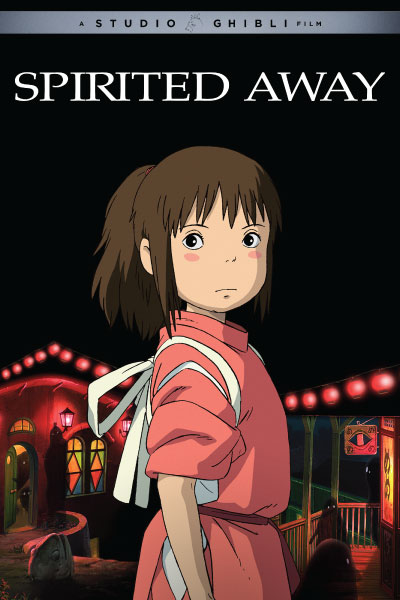
Moving away from large-scale conflicts with multiple actors, we have the story of a young girl who is very afraid of the world. Spirited Away is often considered the most celebrated Ghibli film, and for good reason. The spirit world is as vibrant as the spirits themselves are mysterious. This film has one of the most unique settings ever put on the big screen and the imagery of this film will stay in your mind for years.
Spirited Away begins with Chihiro, a young girl whose family has recently moved to a small town in the countryside. She misses her friends and is scared of the new setting. As her family searches for their new home, they go through the woods and find an old abandoned theme park through a large tunnel. Chihiro, frightened of the strange place, clings to her mother’s arm and begs them to go back. However, her parents find large platters of steaming, fresh food inexplicably ready for eating in the middle of a deserted shopping district. Hungry from the drive, her parents start eating, to Chihiro’s dismay. While exploring, Chihiro comes across a young man named Haku who exclaims that she needs to leave before the sun goes down. Chihiro runs to find her parents but is horrified to find they’ve turned into pigs. As the sun sets, the abandoned town suddenly changes to a waking spirit village opening up for business. Chihiro finds her exit to the village blocked off and Haku eventually rescues her, telling her that she’s in the spirit world now, which is no place for a human. Chihiro eventually finds work at the large spirit bathhouse, entering a deal to work at the bathhouse until she can eventually free her parents.
Although the world and character designs of this film are deeply original, much like Princess Mononoke, this film is a revisitation of many of the themes of Kiki’s Delivery Service. Chihiro is a young girl who has suddenly been thrust into a new environment. This new place, the spirit world, is unfamiliar and often terrifying if taken at face value. The people who inhabit the world are rude, as the toiling doldrums of their everyday tasks are suddenly interrupted by Chihiro, who they see as little more than a nuisance at first. Despite being shoved into a horrible circumstance with the looming threat of her parent’s deaths, Chihiro still manages to find time for little acts of kindness throughout the story. Chihiro enters the world of Spirited Away with compassion and the characters of the story change from her actions. Lin and Kamaji, both stubborn and rude at first, grow more empathetic toward those around them. No-Face and Boh, two characters who seem monstrous at first, overcome their own selfishness and greed to find a way to better fit in their world.
And, indeed, Chihiro herself grows a lot from her journey. Starting off as someone scared to leave her mother’s side, Chihiro learns to jump into danger to help aid those that she cares about. This growth is ultimately manifested toward the end of the film when Chihiro takes the train away from the bathhouse. In what stands to be one of the most beautiful scenes in cinema, Chihiro ventures out into the world alone and unsure of what she’s going to face next. However, rather than flinching, curled up in her seat as she was at the beginning of the film, Chihiro looks confidently out the window into the strange and unknown world, sure that she and her friends are ready to face whatever is next.
Howl’s Moving Castle (2004)
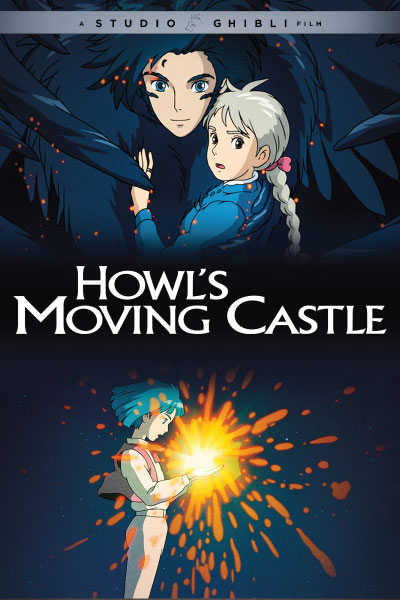
Howl’s Moving Castle is a sweet, character-driven story that was, for years, tied with Princess Mononoke as my favorite Ghibli films. Upon revisitation, I tend to drift more toward Mononoke due to the somewhat lackluster third act in Howl’s. However, it certainly wins the award for the best Ghibli soundtrack.
Seriously. Listen to Merry Go Round of Life.
The story begins with Sophie, a reserved and insecure young woman working/living in a hat shop and living in the shadow of her far more attractive sister. While walking home, two soldiers begin to harass Sophie in an alley. Suddenly, Howl, a wizard, appears and comes to Sophie’s rescue. They’re pursued by strange inky servants of the Witch of the Wastes, but Howl evades them and flies Sophie home. Sophie begins to close the hat shop when suddenly the Witch enters. Jealous of the attention Howl is giving her, the Witch curses Sophie with extreme old age and the inability to tell others about it. Leaving home, Sophie heads out into the wastes to search for Howl. She soon finds his strange walking, mechanical castle, and it’s warden: a fire demon named Calcifer. She and the demon strike a deal: if Sophie can free him from Howl’s control, he’ll remove the curse.
The strength of this story lies in the relationship between Sophie and Howl, which there is unfortunately never quite enough of. Sophie’s insecurity manifested as extreme age is a fantastic visual metaphor, as she begins the story extremely hunched over and wrinkled. Throughout her journey, Sophie progressively looks younger and younger as she becomes less aware and concerned about her appearance. Sophie will periodically de-age entirely when around her new family at Howl’s castle, showing the necessity for her to find a family that welcomes and accepts her. Howl is someone that is outwardly quite confident and suave but is discreetly dealing with his own cowardice. His ramshackle castle acts as a visual metaphor for his cluttered personality and confusion over priorities in life.
However, the world of Howl’s Moving Castle includes a large-scale war and a league of witches led by a mysterious antagonist. Not that these plot points aren’t intriguing, but there is a sense of having far too much happening in Howl’s Moving Castle. We don’t know much about the antagonist, Madame Suliman, and what her relationship was with Howl. We know that Howl averse to getting involved in a war, but we don’t know why the war is happening (besides the fact that it’s recently escalated due to the disappearance of a prince).
The muddling of various conflicts comes to fruition in the somewhat lackluster third act. While Sophie and Howl’s story ends in a satisfying way, the external conflict is suddenly wrapped up and left unexplored. Where Mononoke’s ending is shocking and gargantuan, Howl’s ending is rather unremarkable. However, Howl’s Moving Castle remains to be a beautiful adventure with memorable characters and a wonderfully realized visual metaphor. It remains to be one of my favorite Ghibli films.
Ponyo (2008)
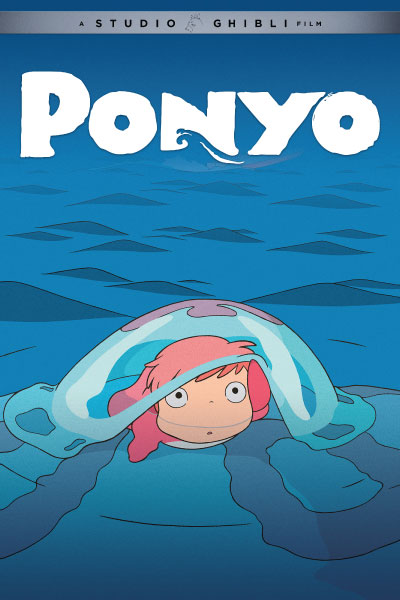
With Mononoke, Spirited Away, and Howl’s Moving Castle being titanic, genre-defining Ghibli films, Ponyo is a return to the sweeter, quieter stories of Kiki’s Delivery Service and My Neighbor Totoro.
Ponyo is a young half-fish, half-human born of a wizard named Fujimoto and a sea god. Escaping her father’s overbearing nature, she happens upon young Sôsuke, a kind boy fascinated with the sea. Sôsuke lives with his mother in an archipelago community while his father works hard at the nearby docks. Appearing as a goldfish, Ponyo is scooped up in a bucket by Sôsuke and taken to school. The two bond, although they don’t share a language, and Ponyo quickly falls in love with Sôsuke and wants to become human. However, Fujimoto captures Ponyo and returns her to his house under the sea. Angry, Ponyo’s magic manifests and she breaks away to find Sôsuke. Her actions have the unfortunate side effect of creating a large tsunami, throwing the community into strife.
Much of Ponyo is thematically focused on Ponyo learning how to be a good child, a theme that is admittedly aimed at children. The most mature theme in this story is perhaps Fujimoto learning to stop being overprotective of his daughter, but this isn’t the focus of this story. What is notable in Ponyo is the fantastic work with animating water in this story. Whether it be simple reflections of characters or Fujimoto’s magical water servants, Ponyo has some of the most impressive and fluid water animation that I’ve ever seen before.
I would view this film as similar to Totoro in that not a lot happens due to the aim of a younger audience. It’s a sweet film though, and certainly worth watching to admire the animation.
The Wind Rises (2013)
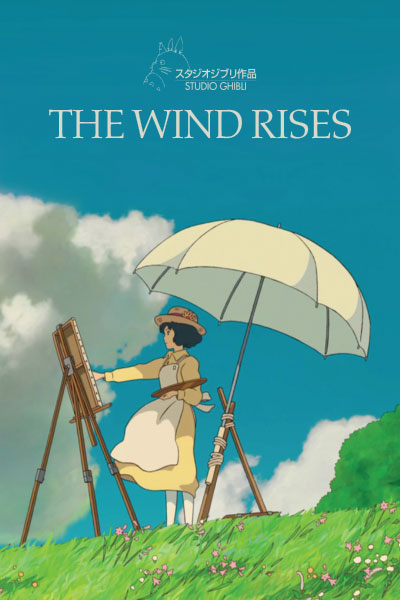
We move from Ponyo, a film largely aimed at children, to The Wind Rises, perhaps Miyazaki’s most contemplative film. Criticized throughout Japan for its anti-war sentiment, The Wind Rises is a look into the creation of the Japanese Zero fighter plane, which was heavily used throughout World War Two.
The story follows Jirô Horikoshi, a fictional character who is based on Jiro Horikoshi, the real designer of the Zero fighter plane. Connected to the Italian aircraft engineer Caproni through a shared dream, Jirô becomes fascinated with airplane engineering early in his life. Caproni struggles with the state of the world and the fact that he is allowed to create beautiful airplanes only when they’re used for war. He tells young Jirô to pursue his dream no matter what and that he has a limited time for creation. As we move through Jirô’s life, we see how invested he is in creating planes as he daydreams about them every waking moment. The story follows Jirô’s journey through school and into the working world, where he is eventually tasked with creating a new plane for the military.
The Wind Rises is a deeply intimate and human film, with even the plane and engine sound effects made entirely with human voices. Although Jirô doesn’t often express his feelings, we see subtle facial cues lovingly animated throughout the film. The film also is deeply connected to Japanese history, criticizing the government during the 1920s and showing the strife that the everyday citizens went through. It’s nonetheless a beautiful film, showing that passion and creativity can be found and fostered in the most unlikely of places.
Perhaps the biggest takeaway is the sentiment that Caproni expresses to Jirô throughout the film: that he has a limited amount of time to create. Hayao Miyazaki announced that The Wind Rises would be his last film, and one can get the sense that the director is grappling with this very issue. With a limited amount of time to create, Jirô learns that his dream didn’t turn out exactly how he expected, but it was nonetheless worth the journey.
Final thoughts
There’s a sport of toxic obsession in trying to get something right the first time that hampers creatives from beginning a new project in the first place. When starting a new short story or script, I ask myself sometimes, “Is this worth it? Will I finish this and be happy with the result? Or will I waste my time?” But, I think I’ve seen that Miyazaki’s films have the answer for this:
Maturing and growing up is the process of making mistakes and learning from them. Becoming a better writer is no different. Some stories, just like Jirô’s airplanes, become stuck in one’s mind and simply must be externalized. You have to put yourself out there, just like Kiki and Jihiro did, and be open to failure. Because then, and only then, will you ever be able to improve.
And it’s alright if you don’t get it quite right the first time. Because you’ve still got time to try again.


